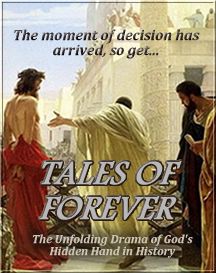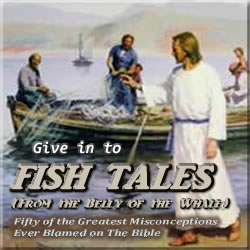A Matter of Style
The Latent Message
One of the most difficult aspects in bringing these stories to life for the sake of a modern audience was the all-important decision concerning the style of translation employed in their retelling. Crucial to this process were certain considerations, the first being the original style of writing in which the stories had been presented in their various incarnations up to the present day. As previously stated, Tales of Forever is a book that has been synthesized from manuscripts some of which date from the remotest periods of antiquity, such as The First Book of Adam and Eve, The Secrets of Enoch, The Book of Jasher, The Letters of Herod and Pilate, and The Gospel of Nicodemus.
When I first encountered these stories more than three decades ago, they only existed in collections that had first been published in the 1920s, while these in turn were reproductions from even earlier versions of the original manuscripts. Upon my initial reading of them, I felt much like someone who encounters the unfiltered works of William Shakespeare for the first time. These were definitely not stories that one could simply breeze through. Poetic yet mystifying, inspiring yet exasperating, they were written in a style that was clearly as archaic and outdated as anything penned by the Bard of Avon. Nearly incomprehensible at first glance, the sublime meaning of the texts seemed to arise only after a great deal of reading and re-reading, which required many hours of study and contemplation. Over the course of time, however, I not only became enthralled with the stories in these books, but I also became convinced that they were literary treasures in their own right. Unfortunately, because of the convoluted style they were written in, I could also see why most modern minds would remain unimpressed and untouched by the latent message embedded in them.
Story Continues Below
Says Richard Price—the founder and CEO of Academia.edu—on his podcast In Depth With Academia:
The Book of Tales: Stories That Confirm the 5,500-year Prophecy Given to Adam About the Coming of Christ is:
To hear Price’s book review of The Book of Tales, CLICK HERE.
To hear Kent and Zen Garcia continue their discussion concerning the implications of the 5,500-year chronology from Adam to Christ as it pertains to the faithfulness of God, CLICK BELOW.
Story Continues From Above
After several years of sharing these stories with friends and colleagues—with admittedly mixed results—I noticed that something unusual began to happen as I attempted to engage others with their contents. Gradually, as I continued to read the narratives aloud to those around me, I ceased to simply recite them verbatim as they were found in the books. I found myself “translating them on the fly” in order to better convey the meaning that I felt was trapped in their pages. Only then did people begin to become engaged, with the end result that they started offering remarks like: “These are some very interesting texts. They shed new light on questions I’ve always had about certain aspects of The Bible.” And: “This is fascinating stuff. I wonder why we’ve never heard anything about these stories in church.”
Finally, after countless readings of the stories, I came to the conclusion that they represented a startling, behind-the-scenes version of The Bible—an extended storyline that constituted an intriguing counterpart to the familiar versions of Scripture. Not only that, but at some point in my journey through this collection of Tales, I began to see them as more than a collage of random texts. Slowly but surely, there emerged a distinct pattern of connectivity, which transformed this scattered compendium into a single, continuous timeline—one that literally pivots upon the little-known prophecy of The Great Five and a Half Days—with Enoch as the narrator of a series of stories, beginning with Adam and Eve, then Abraham and Nimrod, and finally Jesus and Pilate.
Unfortunately, there was still one seemingly insurmountable problem with my grandiose plan. Apart from biblical scholars and literary aficionados, who in this modern, skeptical world would ever take the time to decipher the content of these stories when they were trapped in a language frame that only hardcore Shakespeare fans could appreciate, let alone understand?
So, like every other author before me, the question remained the same: How could I go about creating believable dialog for characters who existed in some of the remotest chapters of human history? Would I simply resort to parroting the style of the King James Bible translators when attempting to depict the biblical past? For me, this would constitute the ultimate failure of nerve, because, quite frankly, I have never been satisfied with biblical movies that took this route. I mean, really, who in their right mind would ever believe that anyone in The Bible actually talked like people who inhabited the world of Elizabethan England? Does anybody think, for one second, that Jesus, Abraham, or Adam spoke in iambic pentameter? Of course not. So why should audiences continue to endure such artistic nonsense? To me, it has always been nothing less than a gross oversimplification that just because a story involves historical characters who inhabit worlds unlike our own they must be portrayed as speaking with dialects and accents in order to convey their unique time and place.







